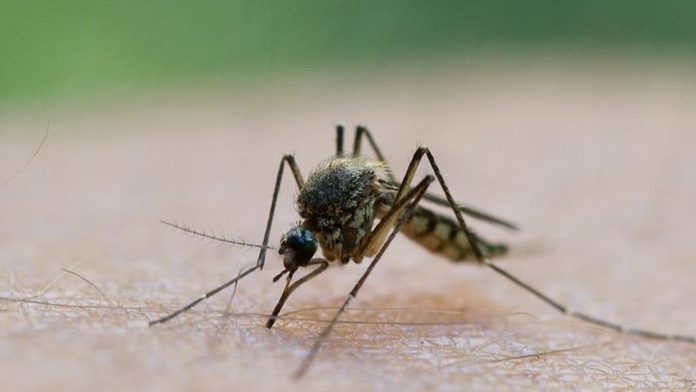Mosquitoes are spreading explosively in some regions of Germany. What is behind this? Can the mosquito plague be prevented?
The most important things at a glance
Experts warn: Certain regions in Germany are more affected by mosquito infestations than others. And there are reasons for this. What are they? And which regions suffer most from the bloodsuckers?
Where are the biggest mosquito hotspots in Germany?
In general, there are mosquitoes in all regions of Germany – there are around 200 native species, including 50 mosquito species. However, the species differ. For example, the common mosquito – also known as the northern house mosquito (Culex pipiens) – can be seen all over Germany. In nature parks, recreational areas, bathing lakes and in flood plains, however, the flood mosquito (Aedes vexans) is more common.
In May, areas in North Rhine-Westphalia, Rhineland-Palatinate, Bavaria and Saarland were primarily affected by flooding. A few days later, a band of heavy rain swept across western and central Germany, causing numerous ponds, large puddles and accumulations of water. The constant temperatures of over 17 degrees Celsius during the day also contribute to flood mosquitoes feeling very comfortable and multiplying quickly.
In addition, the areas mentioned remain humid – firstly because the water has not yet evaporated and secondly because it continues to rain. This promotes the population of flood mosquitoes. It takes a maximum of four weeks from the time the mosquito lays its eggs to the time it becomes a fully grown mosquito. Given this and the fact that a female can lay up to 200 eggs, it is a logical consequence that the mosquitoes are currently able to spread so massively in the still humid regions of Germany.
In other regions of Germany, however, it has been comparatively dry in recent weeks – for example in eastern Germany (Saxony, parts of Brandenburg, Mecklenburg-Western Pomerania and Saxony-Anhalt). As a result, the flood mosquito is less common here.
A high mosquito population is usually associated with regional conditions. Mosquitoes are generally more likely to be found where there is a lot of moisture. In Germany, this would be the Mecklenburg Lake District, areas around Lake Constance and/or in the Eifel National Park, the Bavarian Forest Nature Park, the Rhine floodplains and the Salzhaff. In these regions, there are numerous river banks, river floodplains and other calm, shallow bodies of water in which mosquitoes can lay their eggs.
But the number of mosquitoes is also increasing in large cities and metropolitan areas. It is mainly artificially created water sources in parks, dog and bird baths, but also numerous flower pots on balconies and the like in which the mosquito larvae can grow and thrive. Another plus is the high number of food sources – i.e. potential victims (people and animals) compared to deserted, rural regions.
Statistics show that the amount of precipitation in April, May and June 2024 will exceed the long-term average. Added to this is the mild winter and the general alternation of wet and warm weather this year. Both are rather favorable for mosquitoes. All of these factors contribute to the fact that there are more mosquitoes this year than in drier years.
Experts speak of a mosquito plague when at least 20 mosquitoes per minute are registered taking a blood meal.
The flood mosquito is particularly common in flood areas. Unlike other mosquito species, it lays its eggs in dry soil. As soon as the flood comes, the conditions are ideal for the larvae to hatch, grow and thrive. In addition, flooding creates numerous new ponds and swampy areas. These, in turn, also provide other mosquito species with ideal conditions for laying their eggs.
In addition to the weather, the fact that there are hardly any predators of mosquitoes in flood areas also plays a role. This is because fish, frogs, dragonfly larvae, newts and other predators of mosquitoes do not settle here, or at least not as quickly. This makes it easy for the bloodsucker to spread unhindered.
- You can find out which types of mosquitoes there are in Germany here.
Really effective mosquito repellents are usually chemical and toxic. They therefore harm not only the bloodsuckers, but also the ecosystem in general.
A more environmentally friendly method is to minimize the breeding areas of mosquitoes. For example, by regularly emptying water left in flower pots and watering cans, changing the water in bird baths daily and completely closing rain barrels.
Of course, this is not possible in former floodplains and is only a drop in the ocean. So many wetlands have formed there. They cannot be drained.


